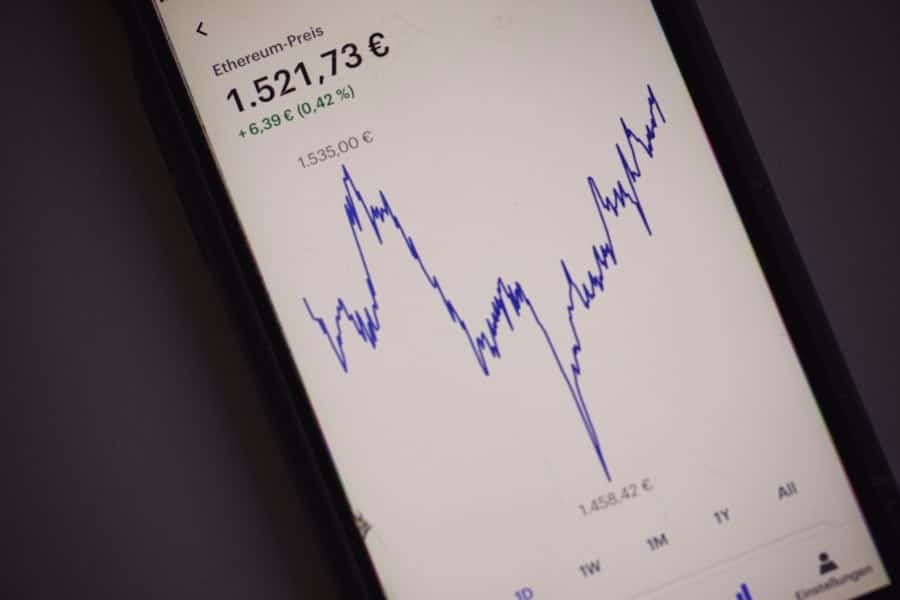Market sentiment is the collective attitude or perception of investors and traders toward a specific financial market or asset. It reflects the overall psychological state of market participants, which can significantly influence their investment decisions. Various factors contribute to market sentiment, including economic data, geopolitical events, corporate news, and social media trends.
Investors and traders consider market sentiment crucial as it provides insights into potential price movements. By assessing the prevailing sentiment, market participants can make more informed decisions regarding buying, selling, or maintaining their positions. Market sentiment is typically classified as bullish (optimistic), bearish (pessimistic), or neutral (indifferent) depending on investors’ outlook on the market or a particular stock.
To gauge market sentiment, investors and traders employ a combination of fundamental and technical analysis, along with sentiment indicators. These indicators include the put/call ratio, the VIX volatility index, and social media sentiment analysis tools. By monitoring these indicators and analyzing market news and trends, market participants can gain a better understanding of the prevailing sentiment and its potential impact on asset prices.
Key Takeaways
- Market sentiment refers to the overall attitude of investors towards a particular market or security.
- Market sentiment can have a significant impact on stock prices, as positive sentiment can drive prices up and negative sentiment can drive prices down.
- Factors influencing market sentiment include economic indicators, news events, company performance, and investor behavior.
- Behavioral finance explores how psychological factors can influence market sentiment, leading to irrational decision-making.
- Market sentiment indicators, such as the VIX index and put/call ratio, can help traders gauge the overall sentiment in the market.
- Managing market sentiment in stock trading involves staying informed, diversifying investments, and using risk management strategies.
- Case studies on market sentiment and stock price fluctuations can provide valuable insights into how sentiment can drive market movements.
Impact of Market Sentiment on Stock Prices
The Power of Bullish Sentiment
When market sentiment is bullish, investors are optimistic about the future prospects of the market or a specific stock, leading to increased buying activity and higher stock prices. This optimism can be driven by various factors, including positive news and events, such as impressive earnings reports or the launch of innovative products.
The Impact of Bearish Sentiment
On the other hand, when market sentiment is bearish, investors are pessimistic and may sell off their positions, leading to lower stock prices. This pessimism can be triggered by negative news and events, such as corporate scandals or economic downturns.
Understanding Market Sentiment for Informed Trading Decisions
It is essential for investors and traders to be aware of the impact of market sentiment on stock prices to make more informed trading decisions. By understanding the prevailing sentiment and its potential impact on stock prices, market participants can better anticipate price movements and adjust their trading strategies accordingly. This awareness enables them to navigate the market more effectively and make more informed investment decisions.
Factors Influencing Market Sentiment

Market sentiment can be influenced by a wide range of factors, including economic indicators, company news, geopolitical events, and even social media trends. Economic indicators such as GDP growth, unemployment rates, and inflation can have a significant impact on market sentiment, as they provide insights into the overall health of the economy and its potential impact on corporate earnings. Company news and events, such as earnings reports, product launches, mergers and acquisitions, and management changes, can also influence market sentiment by shaping investors’ perceptions of a company’s future prospects.
Positive news can lead to bullish sentiment and higher stock prices, while negative news can lead to bearish sentiment and lower stock prices. Geopolitical events such as wars, trade disputes, and political instability can also impact market sentiment by creating uncertainty and volatility in the financial markets. These events can lead to increased risk aversion among investors and traders, leading to lower stock prices and heightened market volatility.
In addition to traditional factors, social media trends and online discussions can also influence market sentiment by shaping public opinion and driving investor behavior. Social media platforms such as Twitter and Reddit have become increasingly influential in shaping market sentiment, with viral posts and discussions often leading to significant price movements in certain stocks.
Behavioral Finance and Market Sentiment
Behavioral finance is a field of study that examines how psychological factors and cognitive biases can influence investor behavior and market outcomes. In the context of market sentiment, behavioral finance plays a crucial role in understanding how emotions such as fear, greed, and overconfidence can drive buying and selling decisions. One of the key concepts in behavioral finance is the idea of herd behavior, where investors tend to follow the actions of the crowd rather than making independent decisions based on rational analysis.
This herd behavior can lead to momentum trading and price bubbles, where stocks are driven to unsustainable levels by irrational exuberance. Cognitive biases such as confirmation bias, anchoring, and overconfidence can also influence market sentiment by leading investors to interpret information in a way that confirms their existing beliefs, or by causing them to rely too heavily on certain pieces of information when making investment decisions. By understanding the principles of behavioral finance, investors and traders can gain valuable insights into the psychological factors that drive market sentiment and use this knowledge to make more informed trading decisions.
Market Sentiment Indicators
There are several indicators that investors and traders use to gauge market sentiment and anticipate potential price movements. One popular sentiment indicator is the put/call ratio, which measures the ratio of put options (which bet on a stock’s decline) to call options (which bet on a stock’s rise). A high put/call ratio may indicate bearish sentiment, while a low put/call ratio may indicate bullish sentiment.
Another widely used indicator is the VIX volatility index, which measures the expected volatility of the S&P 500 index based on options pricing. A high VIX level may indicate increased fear and uncertainty in the market, while a low VIX level may indicate complacency and bullish sentiment. Social media sentiment analysis tools have also become increasingly popular in recent years, allowing investors to monitor online discussions and gauge public opinion about specific stocks or markets.
These tools use natural language processing algorithms to analyze social media posts and identify trends in investor sentiment. In addition to these indicators, technical analysis tools such as moving averages, relative strength index (RSI), and MACD (moving average convergence divergence) can also be used to gauge market sentiment by analyzing price trends and momentum.
Managing Market Sentiment in Stock Trading

Staying Informed about Market Developments
One way to manage market sentiment is to stay informed about current events and economic indicators that could impact investor sentiment. By staying abreast of news and trends, market participants can better anticipate potential shifts in sentiment and adjust their trading strategies accordingly.
Risk Management Techniques
Another way to manage market sentiment is to use risk management techniques such as stop-loss orders and position sizing to limit potential losses in case of unexpected price movements driven by shifts in market sentiment. By setting clear risk management rules and sticking to them, investors can protect themselves from the potential downside of sudden changes in market sentiment.
Maintaining a Disciplined Approach
Furthermore, it is important for investors to remain disciplined and avoid making impulsive trading decisions based on short-term fluctuations in market sentiment. By sticking to a well-defined trading plan and maintaining a long-term perspective, investors can avoid being swayed by temporary shifts in sentiment and focus on their overall investment goals.
Case Studies on Market Sentiment and Stock Price Fluctuations
There have been several notable case studies that highlight the impact of market sentiment on stock price fluctuations. One such example is the GameStop saga that unfolded in early 2021, where a group of retail investors coordinated through social media platforms such as Reddit to drive up the stock price of GameStop, leading to significant losses for hedge funds that had bet against the stock. This case demonstrated how social media-driven sentiment can lead to extreme price movements in certain stocks.
Another case study is the impact of geopolitical events on market sentiment and stock prices. For example, the escalating trade tensions between the United States and China in 2018 led to increased uncertainty and volatility in the financial markets, causing stock prices to fluctuate based on shifting perceptions of the potential impact of the trade dispute on corporate earnings. These case studies underscore the importance of understanding market sentiment and its potential impact on stock prices in order to make more informed trading decisions.
By studying these real-world examples, investors and traders can gain valuable insights into the dynamics of market sentiment and its role in driving price fluctuations in the financial markets.
If you’re interested in learning more about the impact of market sentiment on stock prices, you may want to check out this article on The Econosphere’s website: Contact Us. This article delves into the various factors that contribute to market sentiment and how it can influence stock price fluctuations. It provides valuable insights into the role of investor psychology and emotions in driving market movements.
FAQs
What is market sentiment?
Market sentiment refers to the overall attitude or feeling of investors towards a particular market or security. It is often influenced by various factors such as economic indicators, news, and market trends.
How does market sentiment affect stock price fluctuations?
Market sentiment can have a significant impact on stock price fluctuations. Positive sentiment can drive stock prices higher as investors are more willing to buy, while negative sentiment can lead to selling pressure and lower stock prices.
What are the key indicators of market sentiment?
Key indicators of market sentiment include investor surveys, market volatility, trading volume, and the put/call ratio. These indicators can provide insights into the overall mood of the market and help investors gauge sentiment.
Can market sentiment be measured?
Yes, market sentiment can be measured using various quantitative and qualitative methods. These include sentiment surveys, sentiment indices, and sentiment analysis of news and social media.
How can investors use market sentiment to make investment decisions?
Investors can use market sentiment as a contrarian indicator, meaning they can take the opposite position of the prevailing sentiment. For example, if sentiment is overly negative, it may present a buying opportunity, and vice versa.
Is market sentiment the only factor influencing stock prices?
No, market sentiment is just one of many factors that can influence stock prices. Other factors include company earnings, economic data, geopolitical events, and interest rates. It is important for investors to consider a wide range of factors when making investment decisions.








